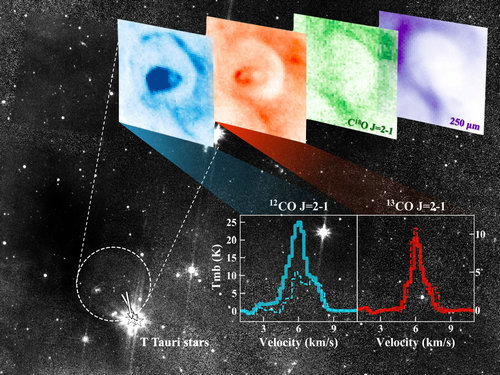Researchers Detect a New Molecular Bubble-Outflow Structure
An international team led by Dr. LI Di from the National Astronomical Observatories of the Chinese Academy of Sciences (NAOC) carried out the carbon-monoxide emission observations in the Taurus molecular clouds using Institute for Radio Astronomy in the Millimeter Range (IRAM) 30-m telescope and James Clerk Maxwell Telescope (JCMT). The researchers identified a new molecular bubble in the carbon monoxide signal from both telescopes.
A combined analysis with the Five College Radio Astronomy Observatory (FCRAO) survey of the Taurus molecular cloud resulted in a discovery of an outflow located at the center of the molecular bubble. Based on Gaia EDR3 data, a pair of TTauri binary stars may have produced the molecular bubble 70,000 years ago. Only one similar case of a molecular bubble coexisting with an outflow (in Orion A) has been reported before.
This discovery supports the common origin of molecular bubbles and outflows. It enhances our understanding of how stellar feedback acts on molecular clouds. The detection of the bubble-outflow structure provides new observational evidence for the feedbacks of TTauri stars to the interstellar medium.
DUAN Yan, a PhD candidate from NAOC and the first author of this paper, discovered this molecular bubble. Dr. Paul F. Goldsmith from Jet Propulsion Laboratory and Dr. Laurent Pagani from Observatoire de Paris made important contributions to the estimation of physical parameters and the driving-source analysis of the molecular bubble-outflow structure.
The study was published in The Astrophysical Journal on February 7, 2023.

Figure: The position, multi-wavelength images, and spectra of the molecular bubble. The upper right panels are the images of 12CO, 13CO, C18O, and 250 μmcontinum. The lower right panels show the average spectra of the molecular bubble (dotted line) and the outflow (solid line). (Credit: DUANYan)
This paper is available at https://iopscience.iop.org/article/10.3847/1538-4357/aca805